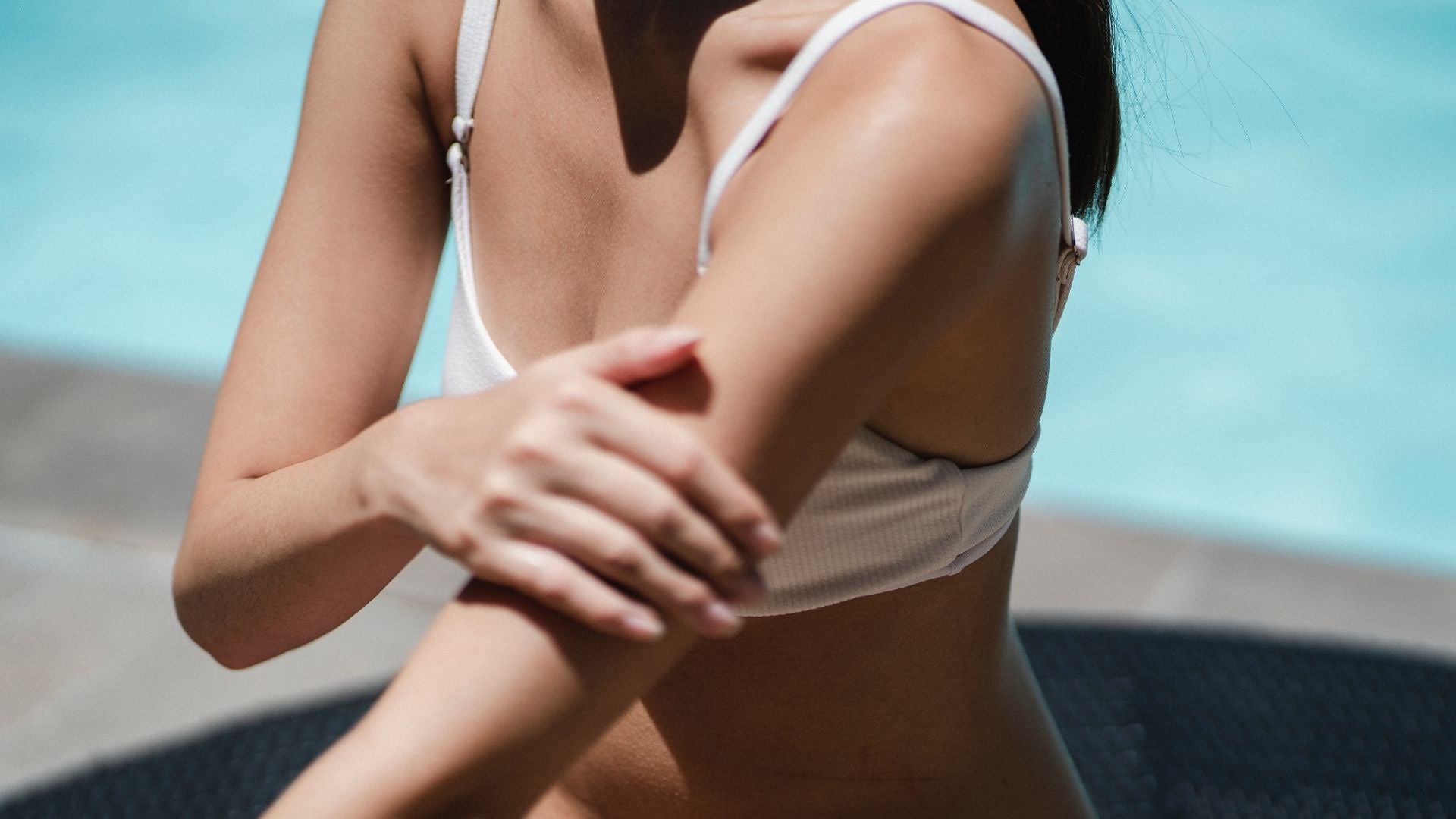
If you suffer from sensitive skin, chances are your skin is aggravated by sun exposure AND the sunscreen you wear to be protected from it.
Some people with highly sensitive skin may think that they’re allergic to sunscreen, but this is usually a response to the ingredients found in the types of well-known sunscreen brands you’d find at a supermarket or chemist.
Different things can set off a reaction, ranging from common conditions like acne and hives, to more stubborn sensitivities like eczema and dermatitis.
So, if the idea of lathering up in sunscreen makes your skin crawl (literally), this is the blog for you, as we’ll take you through common causes of sensitivity, what you should be using to avoid irritation, and the best types of sunscreens for sensitive skin...
Signs and Symptoms
If every time you add sunscreen to your skincare regime, you experience mild discomfort or a severe reaction, it is likely that you are allergic to the type of sunscreen you are using.
Fewer than 1% of all sunscreen users in Australia are allergic, but that doesn’t mean you aren’t one of them. Reactions can range from general itching, rashes and redness, dryness, swelling, scaling and discolouration to more serious sensations like stinging, burning, blistering and bleeding. It can happen within minutes or it may take as long as two days for any signs or symptoms to show up on the skin.
Sometimes you may not get a reaction until the sunscreen on your skin is exposed to sunlight or artificial UV rays. This type of reaction is called photoallergic contact dermatitis.
If you’ve suffered from a reaction recently, cease use of the sunscreen you've got immediately.
Ingredients that Irritate
Understanding what is upsetting your skin is the first step in prevention, and changing your habits for the better. Many of the chemicals used in sunscreens have minimal effects when first applied, however, once exposed to the sun, they heat up and reactions occur between the sunscreen’s active and inactive ingredients and the epidermis.
The most common causes of an allergy or sensitivity to sunscreen is the use of these chemical UV blockers and filters, such as avobenzone, oxybenzone and octinoxate. Because they are absorbed into the skin, they are the most likely cause of any subsequent irritation, but more frighteningly, can possibly lead to hormonal disruption and skin cancer too.
In May 2019, America’s Food and Drug Administration found that these chemicals may be absorbed into the skin at levels higher than previously believed, and that they could pose a risk to pregnant women.
Ingredients such as benzophenones, dibenzoylmethanes and cinnamates are also no-no’s, as they’re known for triggering dermatitis and rosacea. Other dyes, fragrances, alcohol and preservatives used in sunscreens can also induce sensitive skin conditions, and can be worsened if used in conjunction with medication or other potent creams and lotions.

Patch Tests and Prevention
As with any new skincare product, it’s a good idea to do a patch test when trying a new sunscreen for your sensitive skin. To undertake a patch test, you should:
- Squeeze a small amount of sunscreen into your hand and rub onto a random area of skin (such as the inside of your elbow)
- Wait and see if a reaction occurs (you may need to expose the area to sunlight)
- If nothing happens immediately or within two days, you can apply the sunscreen as you normally would
The most effective way to prevent a sensitivity to sunscreen (and the sun too) is to choose products that are broad spectrum with an SPF of at least 30. The best sunscreen for sensitive skin is one that is mineral based or dubbed a “physical sunscreen”, as these contain zinc oxide and/or titanium dioxide, which are safe and effective sun blockers.
Our People4Ocean range of sunscreens for sensitive skin are Australian made and unscented, making them perfect for daily use, the whole body and for covering up important areas such as the face, scars, and tattoos.
For acne prone skin, it’s important not to skip sunscreen in an attempt to ‘dry out’ pimples by exposure to the sun. Blemished skin should always have non-comedogenic (non-pore clogging) sunscreen applied to it, with a light and non-greasy texture.
Worried about sunscreen for kids with sensitive skin? Physical sunscreens are good for people of all ages and skin conditions, including children over 6 months, and for adults with pigmentation problems like vitiligo or a tendency to freckle easily.
Treatments
In mild cases, a sunscreen or sunlight reaction will subside on its own, and after sun solutions like aloe vera can aid with soothing symptoms as well as sunburns. Moderate to severe cases, however, may require topical or oral steroids to reduce the inflammation.
Continued sun exposure can also cause further aggravation a sunscreen allergy-related rash. It’s important to stay out of the sun until your skin has completely healed (which can take up to several days for full recovery).
As always, a dermatologist is best placed to diagnose an unresolved reaction and help determine treatment plans and what to avoid in future.


Comments (0)
Back to Blog